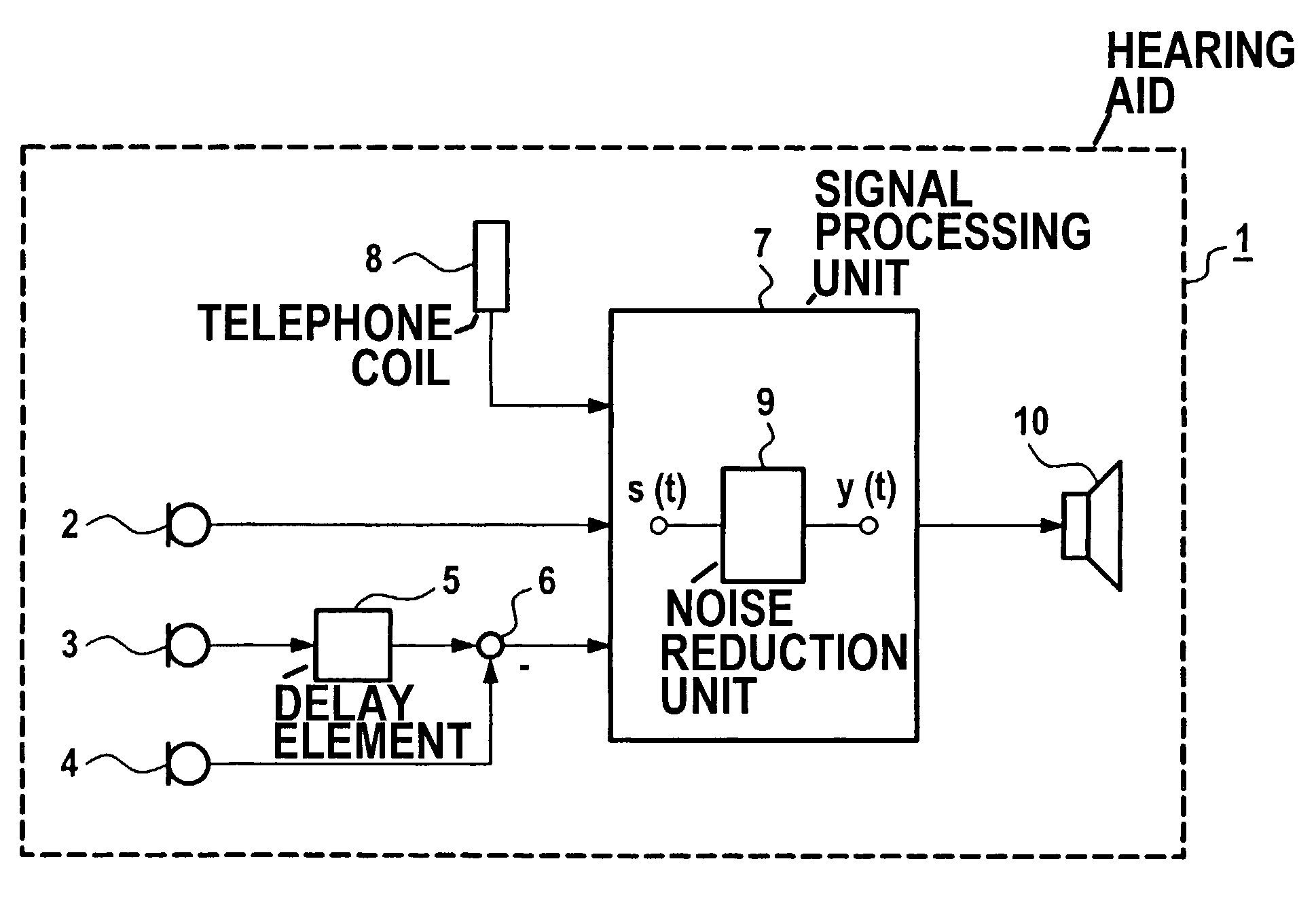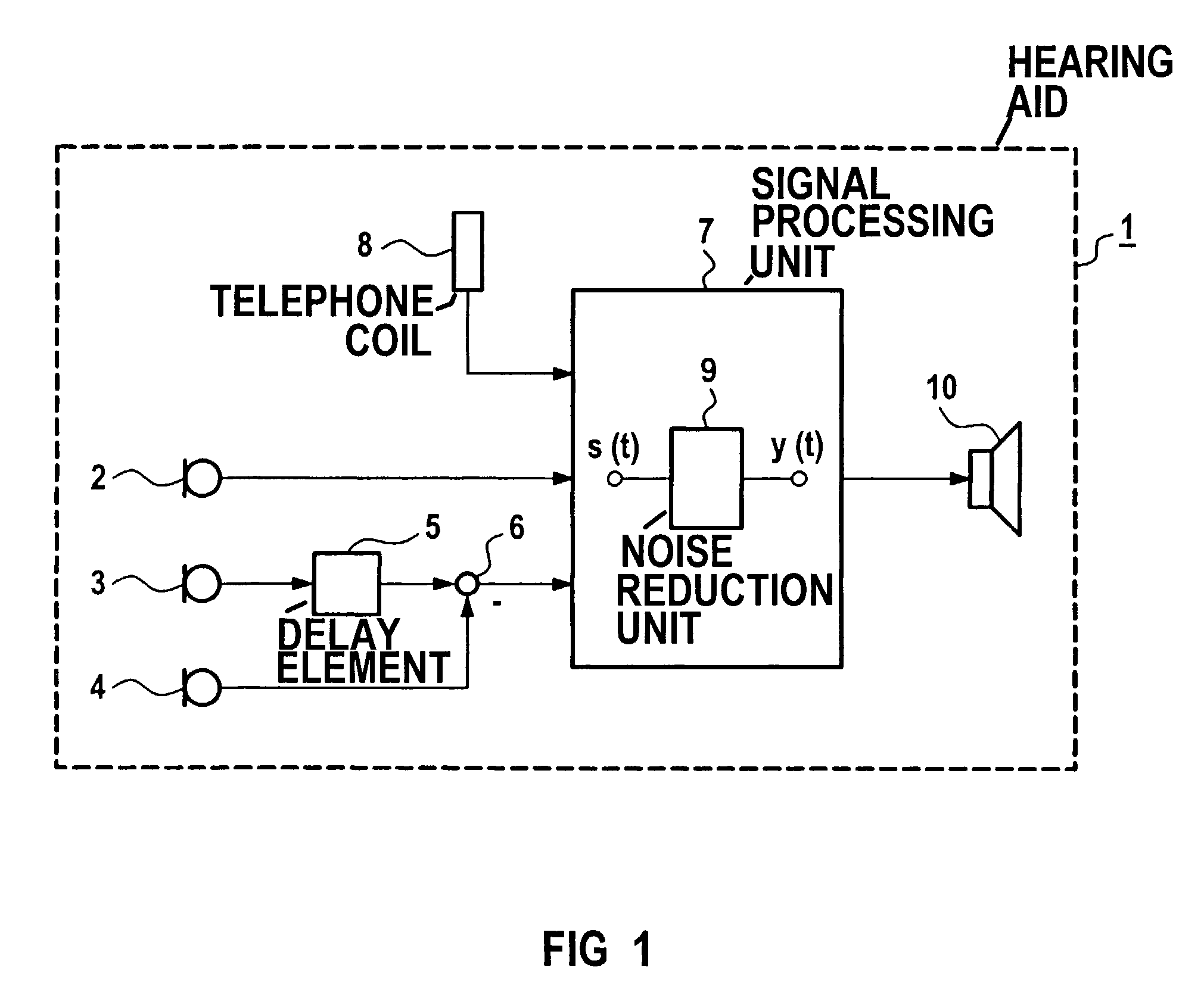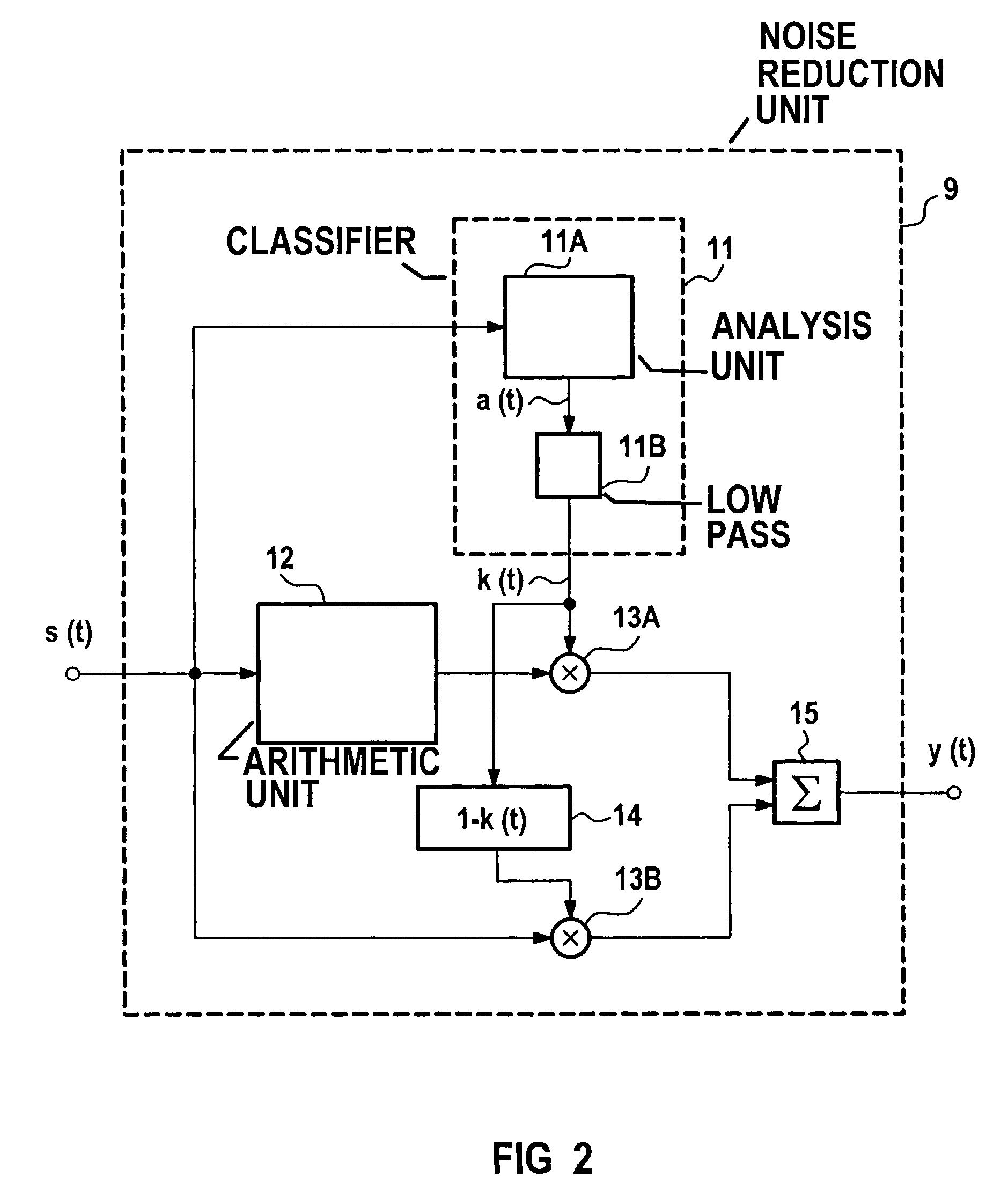Method for the operation of a hearing aid as well as a hearing aid
a hearing aid and operation method technology, applied in the field of hearing aid operation, can solve the problems of irritation of the perception of sound signals in associated natural auditory situations, disturbing acoustic effects, etc., and achieve the effect of avoiding disturbing acoustic effects
- Summary
- Abstract
- Description
- Claims
- Application Information
AI Technical Summary
Benefits of technology
Problems solved by technology
Method used
Image
Examples
Embodiment Construction
[0040]FIG. 1 shows a block circuit diagram of a hearing aid 1 in which an omnidirectional microphone 2 as well as a directional microphone formed of the microphones 3 and 4 are provided for picking up an acoustic input signal. For forming a directional microphone system, the two microphones 3 and 4 are electrically interconnected to one another via a delay element 5 as well as a difference element 6. The microphone signals are supplied to a signal processing unit 7 for further processing. This unit 7 preferably comprises a digital signal processor in which the signal processing ensues in parallel in a plurality of frequency channels. For compensating the individual hearing loss of a hearing aid user, the signal processing unit 7 can be set by a plurality or parameters. All of the processing functions of the hearing aid can be construed as the signal processing system of the hearing aid, including those functions that are described as occurring in the signal processing unit. In other...
PUM
 Login to View More
Login to View More Abstract
Description
Claims
Application Information
 Login to View More
Login to View More - R&D
- Intellectual Property
- Life Sciences
- Materials
- Tech Scout
- Unparalleled Data Quality
- Higher Quality Content
- 60% Fewer Hallucinations
Browse by: Latest US Patents, China's latest patents, Technical Efficacy Thesaurus, Application Domain, Technology Topic, Popular Technical Reports.
© 2025 PatSnap. All rights reserved.Legal|Privacy policy|Modern Slavery Act Transparency Statement|Sitemap|About US| Contact US: help@patsnap.com



